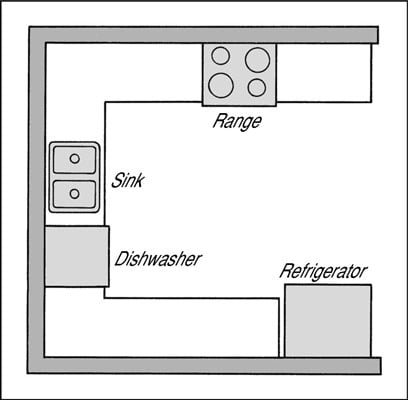When you are remodeling your kitchen, you are probably going to want a new sink. There’s more to picking the right sink than just deciding on a color and a material. The first question you should ask when replacing your sink is: How many bowls do I need or want? The second question you should ask is: What bowl depth and shape do I prefer?
A kitchen sink can have one, two, or three bowls of various shapes and sizes. The National Kitchen and Bath Association (NKBA) recommends a single large-bowl sink for kitchens under 150 square feet.
A double-bowl sink is recommended for larger kitchens. The two bowls give you two work areas, so you can clean vegetables in one bowl while someone else is washing his hands in the other. Try doing that in a single-bowl sink!

You may even want to add a smaller third bowl, especially if you have a lot of counter space. The third bowl is often called a salad-prep sink because you generally use it during food (usually salad) preparation and not for washing or rinsing dishes. Most kitchens have a two- or three-bowl sink.
The number of bowls your sink can actually support usually depends on the available countertop space. The NKBA recommends a minimum of 36 inches of open counter space on one side of a kitchen sink and at least 18 inches on the other. Meeting these space requirements is not a problem in most kitchens. Don’t forget, too, that you can add a second sink in a kitchen island.
You can find bowls that are square or round, but a rectangular bowl is popular for a couple of good reasons. First, the rounded corners found in most rectangular sinks are easier to clean than square corners. Second, and maybe more important, a rectangular bowl holds more stuff than either a round or oval-shaped bowl.
The depth of kitchen sink bowls has gradually increased over the past decade or so. Your existing sink may be only 5 or 51/2 inches deep, although today’s sinks are usually between 6 and 8 inches deep. Sinks as deep as 10 and even 12 inches are not uncommon because deep sinks have their advantages. For example, a deeper sink keeps splashing to a minimum. But the sink shouldn’t be so deep that you or your kids are uncomfortable using it. If you can’t decide on a depth, then choose two.
Be aware that bowls with different depths usually require some adjustments when hooking up the drain assembly. You must know the height of the existing drain line where it comes out of the wall when ordering your sink. If you order a sink with bowls that are deeper than the drain height, the sink won’t drain properly!
Unfortunately, most people don’t think about selecting the correct hand, but they should. Think about how you use your existing sink, and then answer these questions:
Who uses the sink most, and which hand does that person favor?
How much counter space (in inches) is available on each side of the sink?
Do you prefer a certain side for preparing food?
If you find that, when you think about it, you’re not crazy about the current hand setup of your existing sink, now’s the time to change it to the way you really want it. You can find sinks in just about every combination of depths and bowl sizes, so if you don’t see the combination that you want on display, ask the salesperson if you can special order the design you really want.

